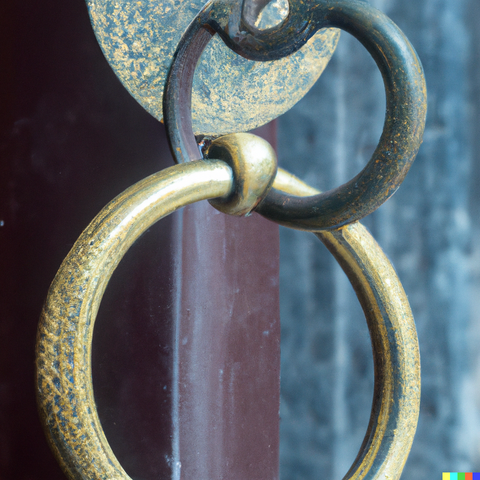Antique Hardware Finds From Around the World
Antique hardware holds a special place in the world of collectors and history enthusiasts. These unique pieces are not only functional but also carry a rich history, often recounting tales of craftsmanship and the passage of time. In this article, we will explore some of the most amazing antique hardware finds from different corners of the globe, shedding light on their significance and allure.

The Edo-Era Door Handles of Japan:
Japan's Edo period (1603-1867) was renowned for its exquisite craftsmanship. The ornate door handles from this era, known as "chokoku" in Japanese, exemplify the meticulous attention to detail and artistic flair of that time. These handles, featuring intricate carvings and unique motifs, add an air of grandeur to any door they adorn.
Victorian Doorknobs of England:
The Victorian era (1837-1901) in England was a period of opulence and sophistication. The doorknobs produced during this time are a testament to the Victorian aesthetic, with their ornate designs and lavish materials such as porcelain, brass, and crystal. These doorknobs not only serve as functional hardware but also stand as exquisite pieces of decorative art.

Chinese Brass Locks from the Qing Dynasty:
China's Qing Dynasty (1644-1912) marked a time of great cultural and artistic development. The brass locks produced during this period are a remarkable example of Chinese craftsmanship. These locks not only display intricate engravings and patterns but also incorporate various symbolic motifs that represent good luck and protection against evil spirits.
Art Nouveau Cabinet Hardware from France:
The Art Nouveau movement, which flourished in the late 19th and early 20th centuries, embraced nature-inspired designs and curvilinear forms. French cabinet hardware from this period showcases the essence of Art Nouveau with its flowing lines and plant-like motifs. Handles and knobs made from materials like bronze and glass display an elegance that adds a touch of sophistication to any furniture piece.

Ottoman Empire Door Knockers of Turkey:
The Ottoman Empire, which spanned several centuries (1299-1922), left behind a rich cultural heritage. The door knockers of this period, made from various metals such as brass and iron, exhibit intricate carvings and motifs that reflect the Ottoman architectural style. These door knockers not only served as functional hardware but also showcased the social status and taste of the homeowners.
Colonial-era Locks of the Americas:
The colonial period in the Americas witnessed the fusion of different European styles with local craftsmanship. The locks from this era often combined elements from various cultures, showcasing unique designs and influences. These colonial locks, often made from iron or brass, provide a glimpse into the historical context of the time and bear witness to the blending of cultures in the New World.

Ancient Egyptian Cabinet Handles:
Egyptian civilization holds an enduring fascination for historians and archaeologists alike. The cabinet handles from ancient Egypt, crafted from materials like bronze and precious metals, depict deities and hieroglyphics, offering a window into religious and cultural beliefs of the time. These handles, despite their age, still exude a timeless beauty and significance.

The allure of antique hardware lies not only in its functionality but also in its ability to transport us back in time. From the opulent doorknobs of the Victorian era to the intricately carved locks of the Ottoman Empire, each piece tells a unique story of craftsmanship and cultural significance. These amazing antique hardware finds from around the world provide a glimpse into the rich tapestry of history and offer collectors and enthusiasts a chance to own a part of this remarkable heritage.




Leave a comment